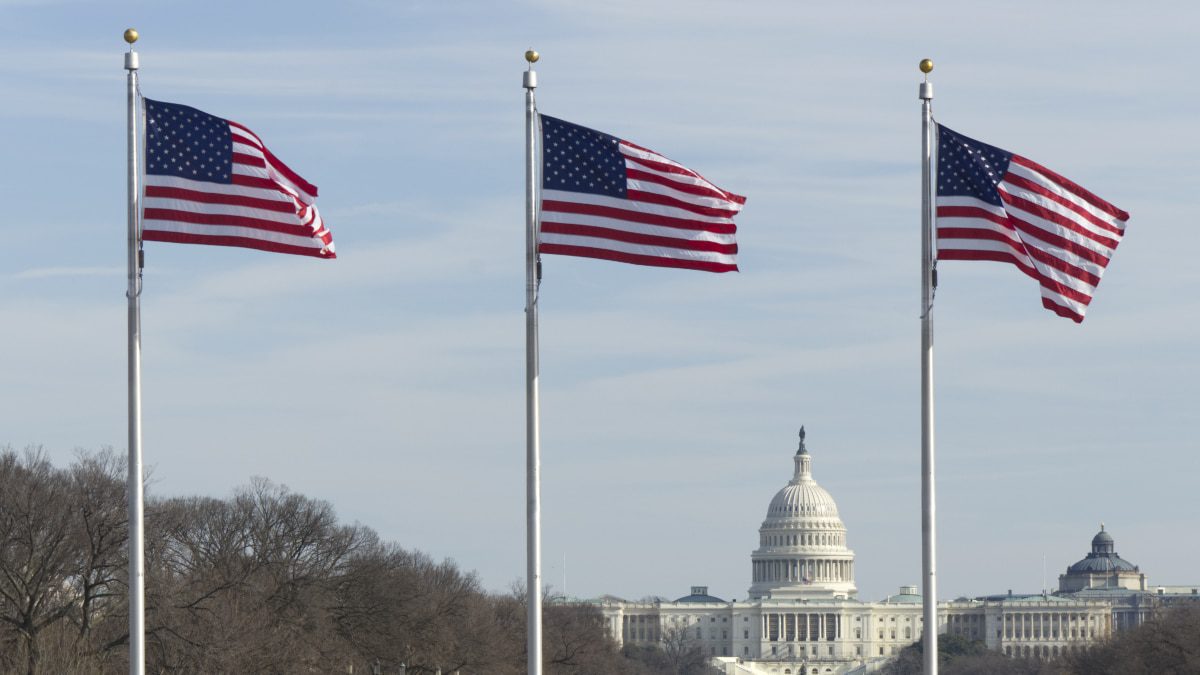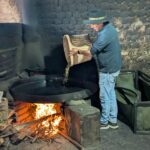Como la mayoría de los ciudadanos de los Estados Unidos, me llamo estadounidense todo el tiempo. No fue hasta que me mudé a Argentina que aprendí cuán egocéntrica puede sonar esta sola palabra para los centroamericanos y sudamericanos, especialmente cuando se habla en español.
Imagina una conversación que dice así:
R: Hola, mi nombre es Angie. ¿Cuál es la tuya?
J: Soy Jorge. Mucho gusto.
A: ¿De dónde eres de Jorge?
J: Soy argentino. ¿Y tú?
R: ¡Soy estadounidense!
J: Um… Yo también. ¿Eres norteamericano?
R: Supongo que sí. Soy de los Estados Unidos.
J: Ahhh… usted es un estadounidense.
Sí, esa es una traducción del tipo de conversación que tuve con los argentinos cuando me mudé por primera vez a Buenos Aires.
Aprendí bastante rápido a ofrecer «Soy americana» en lugar de «Soy americana».
Hoy, también podría responder: «Soy norteamericana» porque, después de vivir en Ecuador, aprendí que era una gran alternativa para describir de dónde vengo. Obviamente, esta respuesta deja un poco de duda. Pocas personas pensaban que era de México, mi acento era un regalo muerto, pero asumieron Canadá o los Estados Unidos. Si quisieran saber más, preguntarían.
Usar estadounidense o norte americana le hizo saber a la otra persona que lo entendí: mi cultura estadounidense no era dueña de la palabra estadounidense … especialmente cuando se habla español.
¿Qué es un estadounidense?
Entonces, ¿por qué nos llamamos estadounidenses? Es simple y complicado al mismo tiempo.
La explicación simple es que hemos sido llamados estadounidenses toda nuestra vida. Si eres de mi generación, es posible que hayas crecido cantando
America the Beautiful
en la escuela. Describe la belleza de los Estados Unidos, no de Canadá, Ecuador o Brasil. Todo lo que nos rodea nos dice que somos estadounidenses. Americano como el pastel de manzana.
Incluso mi tiempo pasado en el extranjero cuando era niño en lugares como Inglaterra y Filipinas golpeó la idea de que éramos estadounidenses, siempre orgullosos y patrióticos. Celebramos el 4 de julio, el Día de Acción de Gracias y el Día de los Caídos (con barbacoas, no visitas a las tumbas de los soldados) con completo entusiasmo. Cuando me preguntan de dónde soy, la respuesta sería Estados Unidos. Yo era estadounidense.
Sin embargo, comencé a cuestionarme a mí mismo después de vivir en otros países de las Américas. Quería saber más. Ahí es donde entra la respuesta complicada.
Historia de la palabra americano
La palabra americano fue utilizada por primera vez alrededor de 1570 por los europeos para referirse a los pueblos indígenas que viven en las Américas. Alrededor de 1640, una nueva idea comenzó a afianzarse, que un estadounidense era residente de América del Norte y de ascendencia europea. Y, sin embargo, la palabra nativo americano no surgió hasta 1765. Así que probablemente hubo confusión, incluso al principio, en cuanto a lo que significaba exactamente la palabra estadounidense.
Incluso en español, americano a veces significa que es algo de los Estados Unidos. Un gran ejemplo de esto es el término Americano. Utilizado para referirse a una infusión más débil de café del tipo que los latinoamericanos creían que era un alimento básico de los Estados Unidos, apareció por primera vez alrededor de 1950.
Y si estás estudiando español en un aula o con una aplicación como Duolingo, aprenderás que todos los estadounidenses son «un americano» o «una americana» no «un estadounidense«.
Sin embargo, según la Real Academia Española, institución que protege y mantiene la lengua española, la palabra América ya no debería referirse a Estados Unidos:
América. 1. Debe evitarse la identificación del nombre de este continente con los Estados Unidos de América (→ Estados Unidos, 4), uso abusivo que se da sobre todo en España.
América. Debe evitarse la identificación del nombre de este continente con los Estados Unidos de América (→ Estados Unidos, 4), un uso abusivo que se produce especialmente en España.
Por supuesto, se refieren al idioma español, no al inglés. Pero debería hacernos plantear la pregunta, ¿por qué no usar una palabra diferente para describirnos a nosotros mismos?
Un nuevo término – Estadounidense
Si bien esta aún no es una gran conversación en los Estados Unidos, predigo que lo será.
A medida que continuamos evolucionando hacia una economía global y a medida que Internet borra las fronteras físicas, haciendo que la información esté más fácilmente disponible para todos, nos encontraremos con la necesidad de saber exactamente quiénes somos de manera que no nieguen a los demás su identidad.
¿Es el estadounidense una palabra adecuada?
Si bien se considera no estándar, la palabra estadounidense tiene un historial de uso. Echa un vistazo a esta descripción que se encuentra en
The Rob Roy on the Baltic
escrito por John MacGregor en 1867:
Porque este libro azul es una especie de cartilla escolar, destinada a enseñar a los daneses cómo pronunciar el idioma estadounidense, y tal vez nosotros los ingleses también podamos tener una lección.
A principios de este siglo, en 2005, fue utilizado por Greg Scott, editor de Cowboy Poetry:
Hay una verdadera grandeza estadounidense en algunas de las cosas que dice Whitman.
Además, Urban Dictionary, un sitio web que documenta la jerga moderna, incluye Unitedstatesian. Esta definición superior de 2007 ya no está disponible, pero es mucho mejor que muchas de las actuales.
Entonces, ¿qué debe hacer un estadounidense?
El lenguaje es una bestia astuta, que nos desliza cuando menos lo esperamos. Una palabra se puede usar durante años y luego, de repente, adquiere un nuevo significado (cool, woke y salvaje), se prohíbe (retardado, ama de casa y homosexual) o se reclama (queer, puta y geek).
¿En qué momento los que venimos de los Estados Unidos decidimos que el término estadounidense está listo para el uso general? Por supuesto, ninguno de nosotros tomará esa decisión. Será una palabra que se arrastra y se arrastra por las esquinas traseras de Internet hasta que, un día, no lo hace.
Mi consejo es que, cuando hable español en el extranjero, siempre use el término estadounidense. Evita cualquier confusión y es poco probable que cause ofensa. Eso es esencial cuando eres un invitado en otro país.
¿Qué tal cuando se habla inglés? Mi consejo es que te lo pruebes, como un nuevo par de pantalones.
Tal vez sea un mal ajuste. Lo más probable es que sea como fondos de campana, apropiados en el lugar correcto en el momento adecuado.















Una solución que viene practicándose es la de pensarlo como una convención de los DIFERENTES IDIOMAS, o sea no es lo mismo «American» del inglés, que «americano/na» del español, ambas palabras evolucionaron distinto en sus respectivos idiomas, como «exit» y «éxito» («success» en inglés), o como «carpet» y «carpeta» («folder» en inglés), que tienen orígenes comunes pero terminaron diferenciando sus significados.
Es decir que hay que respetar las tradiciones lingüísticas cuando entramos en el hablar del otro, ya que nos sería muy difícil comunicarnos a los de habla hispana si mantuviésemos esa objeción y resistencia a referirnos a los de Estados Unidos como «Americans» estando en la ciudad de Nueva York.
(Disculpas, había olvidado poner mi nombre en el comentario anterior)
Para resumir, en español sos estadounidense, en inglés sos American.
Además hay que recordar que -por convención- para lo continental referido a la palabra «América», en el idioma inglés se usan las palabras «South American» y «North American» pero no «American».
Gracias por tu comentario, Fabián! Cuando más estadounidenses hablan español, comenzará a cambiar como usamos la palabra American en inglés.